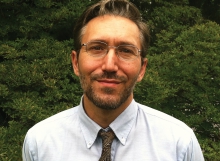
Jews Then and Now
It’s fascinating how certain things over the ages remain the same. As I read this week’s parsha, the construction of the Tabernacle made me think of synagogues nowadays.
In our parsha, God says:
וְעָ֥שׂוּ לִ֖י מִקְדָּ֑שׁ וְשָׁכַנְתִּ֖י בְּתוֹכָֽם
“And let them make Me a sanctuary that I may dwell among them.”
Even though it was a Temple with animal and vegetable sacrifices and offerings, the Tabernacle was also a place for prayer and gathering, making it the first synagogue in Jewish history. What were the features of this nascent place of worship?
In the center of the Tabernacle was a building known as the Mikdash (“the Hallowed Place”), where there were four prominent items:
The Ark of the Covenant held the tablets Moses brought down from Mt. Sinai and, eventually, a Sefer Torah.
There was a seven-branched Menorah that lit up the nights.
There was the Shulchan, a table upon which golden racks held 12 loaves of fresh bread.
There was a golden altar where 11 spices were burned to produce a tantalizing aroma.
Not surprisingly, these items represent ideals we still value and practice in our synagogues today.
The Torah represents learning: the desire for intellectual stimulation and crafting a connection with God.
The Menorah represents enlightenment in dark times. A synagogue needs to be mindful and proactive about social justice and charity.
With its aromatic showbreads, the Shulchan tells us that there should be good fare to attract people to the synagogue. Perhaps a way to a person’s heart is through their stomach!
The incense altar stimulated the senses of those who entered the Tabernacle. While I don’t know of Jewish houses of worship that burn incense, there’s usually stained glass to tantalize the eyes. Nonetheless, when we have the cafe on Wednesdays, the smell of fresh cookies permeates the building. Maybe that’s our modern-day incense.
These four items of prominence teach us that Jewish places of worship were never single-purposed; instead, they appealed to a wide variety of people with different needs.
Today, as well, there are people who come to the synagogue to learn and pray. Some love the services with music, and some without. Many see the synagogue as their headquarters for doing kindness and promoting social welfare. Individuals desiring to serve a higher cause find roles on the board. We all enjoy a tasty kiddush and value a place to create lasting friendships.
The Tabernacle was the prototype for all houses of worship, meaning synagogues needed to be multifaceted and meet a diverse set of needs. I hope that MHJC continues to serve and evolve, meeting the needs of all in our congregation and community.
Wishing you a wonderful week,
R’ Neil